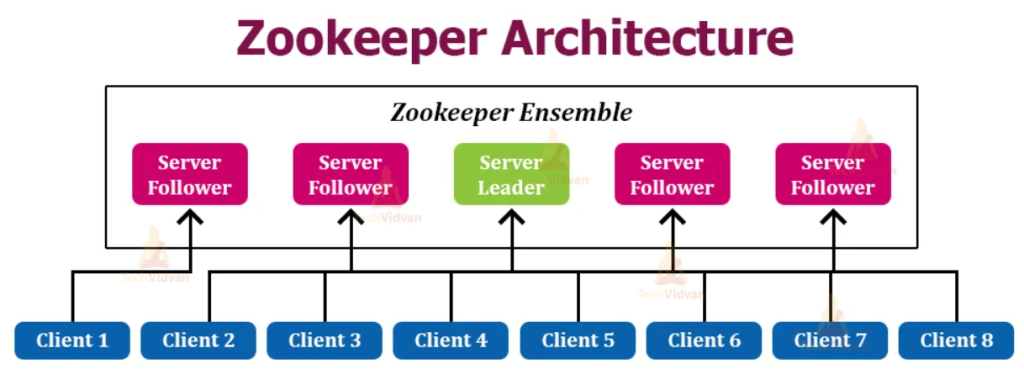
ZooKeeper is an open-source server which provides highly reliable distributed coordination. It is a project of the Apache Software Foundation, originally developed at Yahoo. ZooKeeper is essentially a service for maintaining configuration information, naming, providing distributed synchronization, and providing group services. All of these kinds of services are used in some form or another by distributed applications.
Key Features of ZooKeeper:
- Coordination and Synchronization: ZooKeeper can manage large clusters of services by maintaining status information, configuration, location, and providing synchronized access to this critical data.
- Configuration Management: As a centralized service, ZooKeeper maintains and manages the configuration of a distributed system. Any changes in configuration are synchronized across all nodes in the system almost instantaneously.
- Naming Registry: It provides a namespace to store paths to application data, which can be much like a file system that can be distributed across a large cluster.
- Reliability: Data stored inside ZooKeeper is replicated across a number of servers and is persisted in each server’s memory and storage. This redundancy ensures high availability and reliability.
- Sequential Access: It supports the creation of counters or queues, which is crucial for several distributed applications needing atomic operations.
- Fast Processing: Since the majority of ZooKeeper’s responses come from memory, it provides high throughput and low latency numbers.

How It Works:
- Znodes: ZooKeeper’s data model comprises of znodes, which are similar to files and directories in a traditional file system. Each znode can store a small amount of data, and can also have children znodes.
- Watchers: Clients can set watches on znodes. A watch will be triggered and notify the client when the znode changes. This notification helps clients react to changes in the cluster immediately.
- Consistency: Updates to the data within ZooKeeper are atomic and ordered. All nodes in the ZooKeeper ensemble see the same view of the data, and every change to the data is recorded in the order in which it was applied.

Use Cases:
- Leader Election: ZooKeeper can help in electing a node as leader for a cluster of nodes. The leader node can then handle coordination and management tasks for the cluster.
- Configuration Management: Maintaining shared configuration information such that updates to the configuration are propagated to all nodes in the system promptly and reliably.
- Service Discovery: Maintaining a list of servers providing a particular service. ZooKeeper can notify other components in case a server is not available or if a new server is added.
- Distributed Locks: Ensuring that distributed processes can operate in mutual exclusion using synchronized locks or barriers.
Latest posts by Rajesh Kumar (see all)
- Mastering Qualitative Research: The Role of Focus Groups in Data Collection - July 11, 2024
- What is robots ops? - July 10, 2024
- 5 Effective Online Learning Strategies for DevOps Professionals - July 4, 2024

